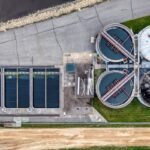Contents
ToggleQuality Standards for Water Treatment Plants (WTP)
Water Treatment Plants (WTPs) are indispensable for delivering safe and drinkable water to communities. Their primary function is to eliminate impurities and contaminants from raw water, ensuring it meets established health and safety standards. Implementing robust quality standards for WTPs is crucial to achieving operational excellence, adhering to regulatory requirements, and guaranteeing the provision of clean drinking water. This article explores the essential quality benchmarks, relevant Indian Standards (IS) codes, and best practices in water treatment plant management.
1. Key Quality Standards for Water Treatment Plants
This section outlines the critical standards necessary for the design, construction, and operation of WTPs.
1.1 Design Standards
- Regulatory Compliance: The design of WTPs must align with environmental regulations and Indian Standards (IS), as well as the guidelines provided by the Central Pollution Control Board (CPCB).
- Capacity Planning: Projections for population growth must be factored into the design to ensure an uninterrupted water supply to the community.
1.2 Materials and Equipment
- Quality Assurance: All components, including filtration systems, pipes, and pumps, must adhere to the prescribed quality standards.
- Durability Testing: Materials should be rigorously tested for resistance to corrosion, chemical interactions, and environmental factors to ensure longevity.
1.3 Installation
- Skilled Workforce: Installation should be carried out by certified technicians to maintain safety and compliance with best practices.
- Adherence to Plans: All installations must strictly follow the approved engineering designs, with any deviations requiring formal approval.
1.4 Testing and Commissioning
- System Validation: Comprehensive testing should verify the functionality of all systems and ensure compliance with performance requirements.
- Documentation: Test results must be systematically recorded and reviewed to confirm adherence to standards.
1.5 Maintenance
- Routine Maintenance: Regular upkeep is vital to maintain the efficiency and safety of WTP operations.
- Record Management: Maintenance logs, including inspection and repair details, should be meticulously maintained for performance tracking.
1.6 Safety and Environmental Compliance
- Workplace Safety: WTP operations must follow safety protocols to protect workers and the surrounding environment.
- Water Quality Standards: Treated water must conform to the specifications set by the Bureau of Indian Standards (BIS) and local regulatory bodies.
2. Relevant IS Codes for Water Treatment Plants
Indian Standards provide detailed guidelines to ensure the effective design, construction, and maintenance of WTPs.
2.1 Key IS Codes
- IS 10500: Specifications for Drinking Water
- IS 3306: Practices for Water Supply and Drainage
- IS 10134: Guidelines for WTP Operation and Maintenance
- IS 16297: Recommendations for Water Treatment Plants
- IS 2948: Standards for the Design and Construction of WTPs
2.2 Importance of Compliance
Adhering to these codes ensures WTPs operate efficiently while minimizing risks. Compliance not only enhances reliability but also safeguards public health.
3. Other Relevant Guidelines and Regulations
In addition to IS codes, the following regulations support the development and operation of WTPs:
3.1 Environmental Protection Act
This act governs effluent discharge and sets benchmarks for water quality, ensuring the treated water does not harm the environment.
3.2 CPCB Guidelines
The Central Pollution Control Board provides detailed instructions for the design, functioning, and monitoring of WTPs, ensuring compliance with environmental norms.
Conclusion
Defining and adhering to quality standards in water treatment plants is crucial for delivering safe and potable water. By following IS codes and other regulatory guidelines, stakeholders can optimize WTP performance and maintain compliance with legal requirements. Regular monitoring, consistent maintenance, and the adoption of best practices are fundamental to achieving sustainable and efficient water treatment operations.












